Backroads of Iberia: Spanish Paradores & Portuguese Pousadas
September 30 - October 16, 2018
Part Two: Spain, Page Two - Ronda
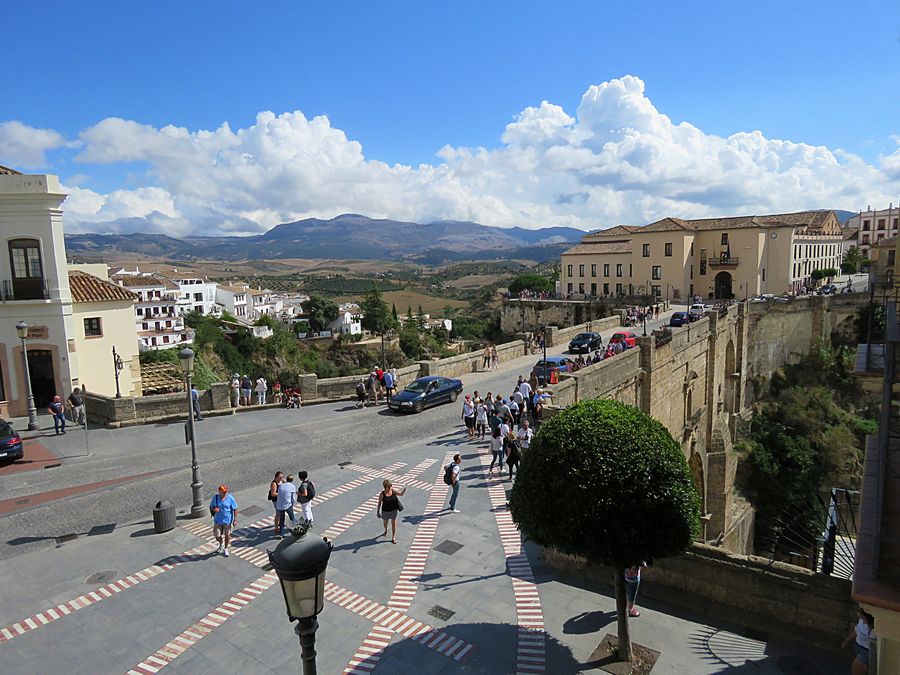
In the town of Ronda, a view from my hotel room, a Parador
built on the site of the old town hall. Ronda is situated in a
mountainous area 2,460 ft. above sea level. The
Guadalevin River runs through the city, dividing it in two
and carving out the steep, 360 ft. deep El Tajo canyon,
above which the city perches. The bridge is Puente Nuevo,
an 18th century stone structure. The Moorish Old Town, La
Ciudad, is on the other side of the 210 foot wide gorge, some
of which you can see on the right side of the photo.
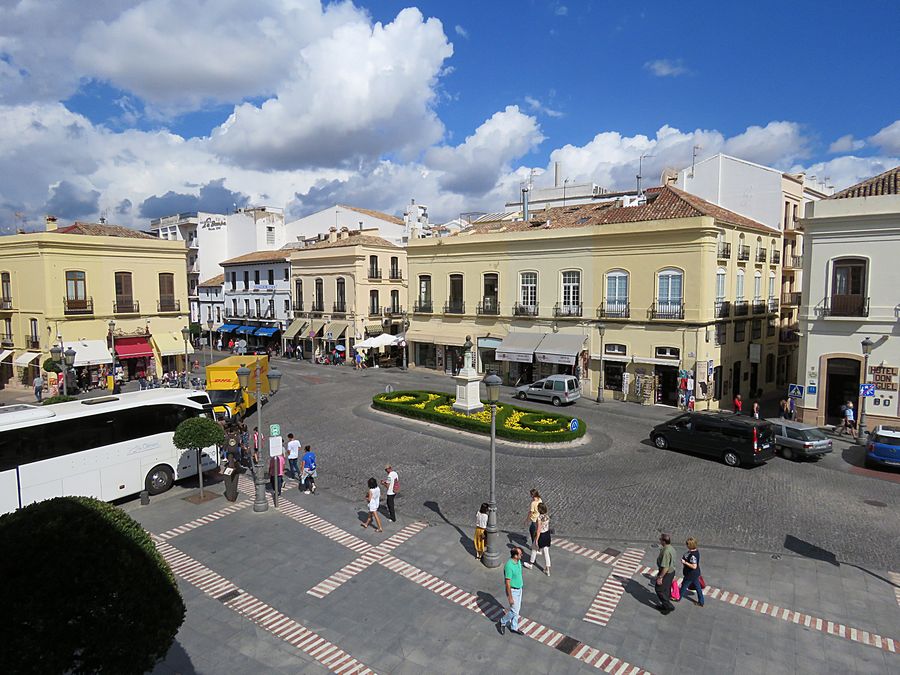
Another view from my hotel room - the area in front of the
hotel. This side of the gorge contains the more recent El
Mercadillo quarter, constructed after the Christian reconquest
of 1485.
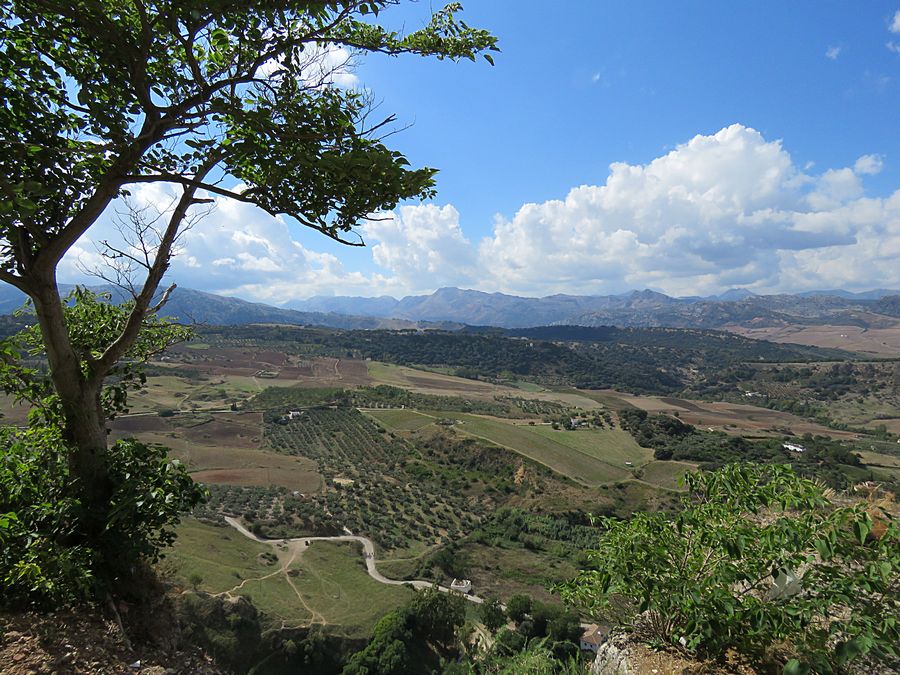
View of the farmland below, including rows of olive trees.
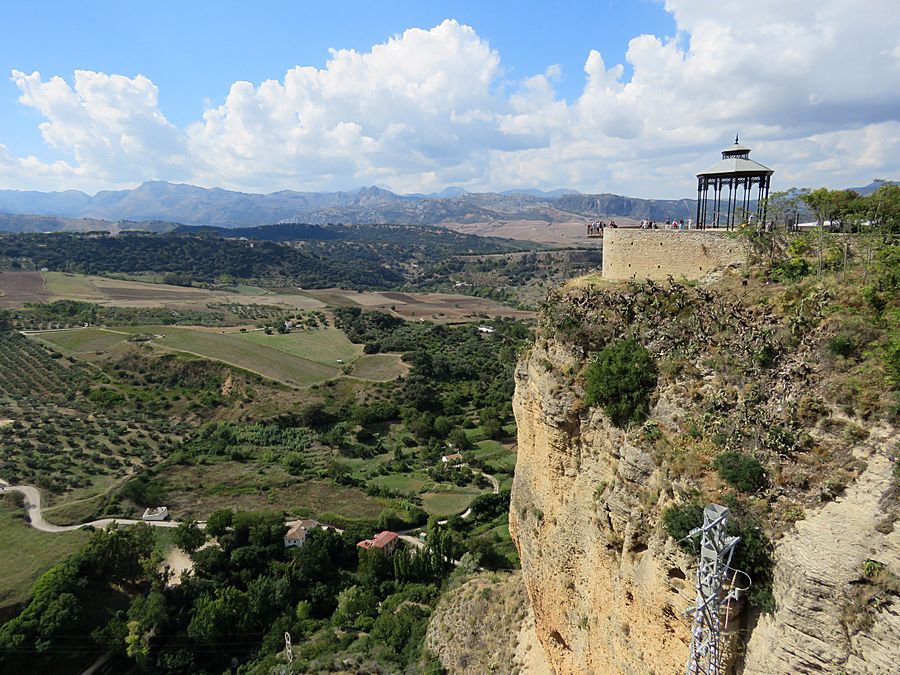
You can walk along the top of the cliff to get beautiful
views of the farmland below and of the gorge.
Ronda was first declared
a city by Julius Caesar.
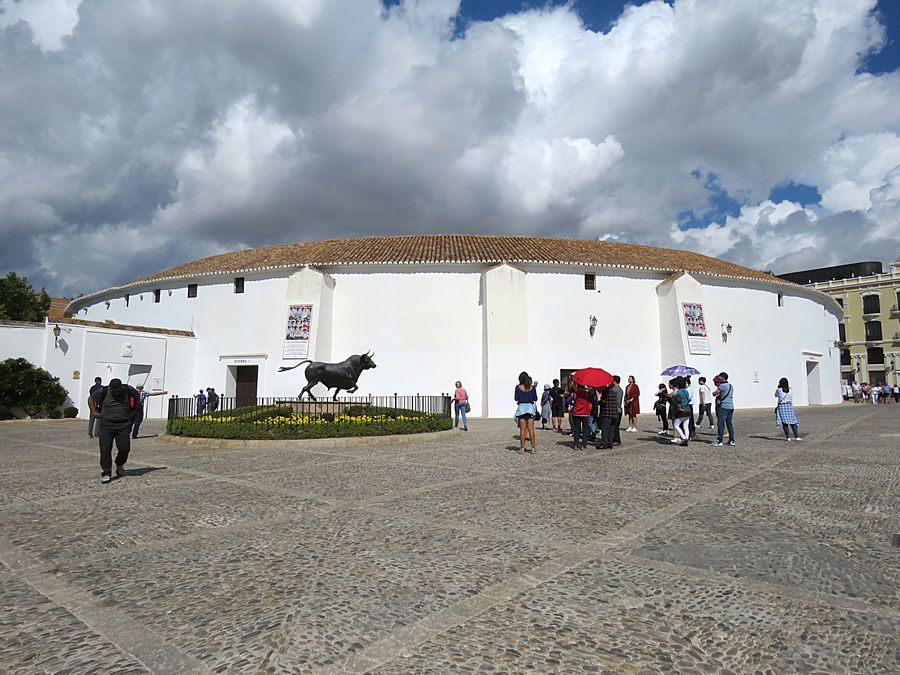
Plaza de Toros, the bullring in Ronda with a bull
statue outside.
Ronda is said to be the home
of modern day bullfighting.
Bullfighting season in
Spain lasts from spring through autumn,
with Sundays typically the biggest day.
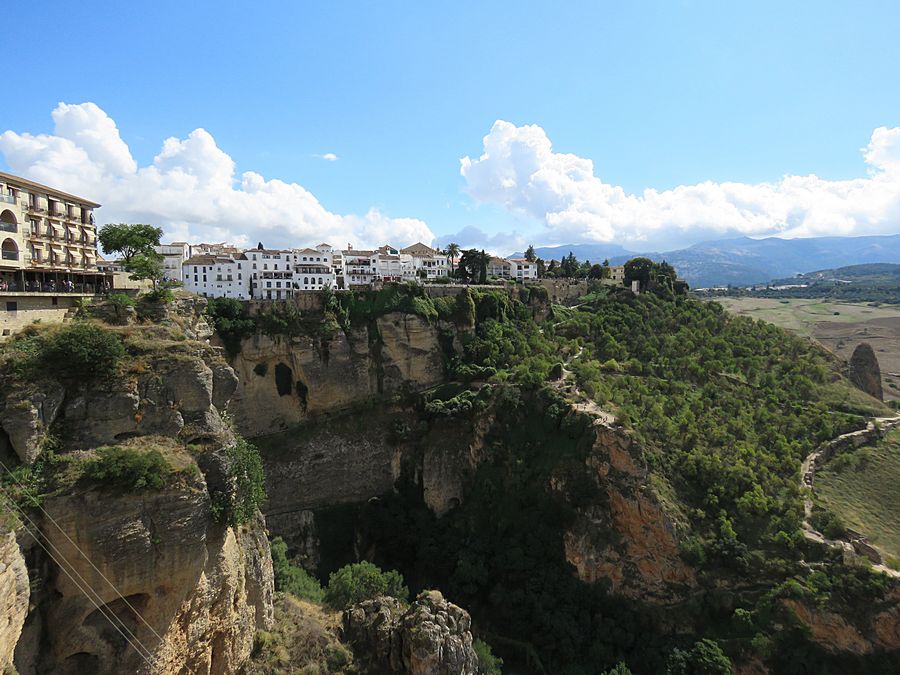
Another view of Ronda. The white towns of Andalusia
are Arabic in conception
and design. Stark white,
the whitewashed dwellings are devoid of any
decoration to mar their blanched perfection
other than black window grills
and potted red geraniums.
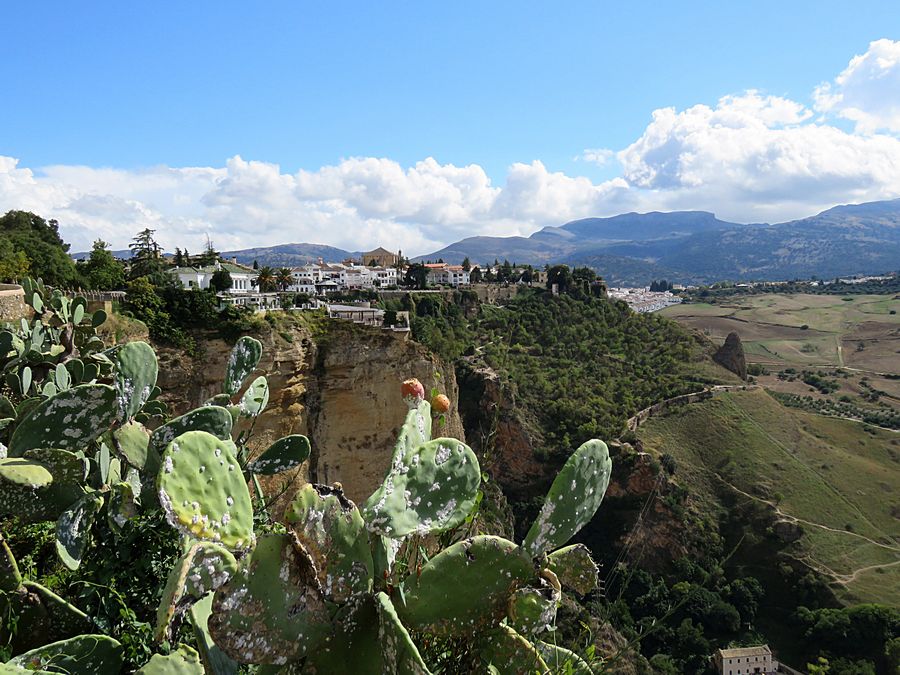
Similar view from further along the walkway.
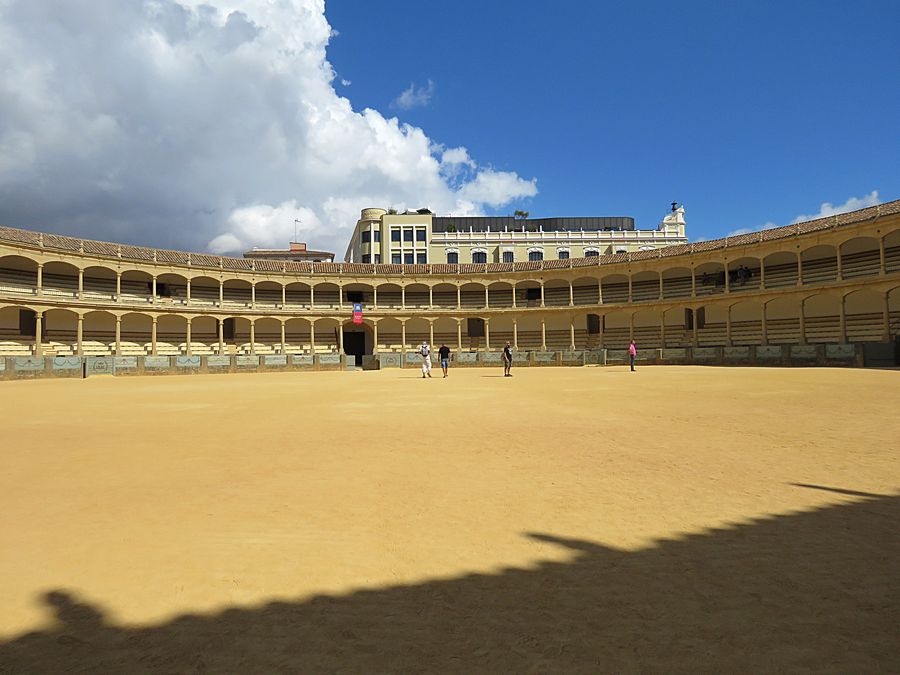
Inside the bullring in Ronda. In the background is a
building that
has a patio with a view overlooking
the bullring, where we later
went for drinks.
Bullfighting in Spain traces its origins to 711 A.D.,
with the first official bullfight
held in honor of the coronation of King Alfonso VIII.
Since it was once
part of the Roman Empire,
Spain owes its bullfighting tradition in part to
gladiator games.
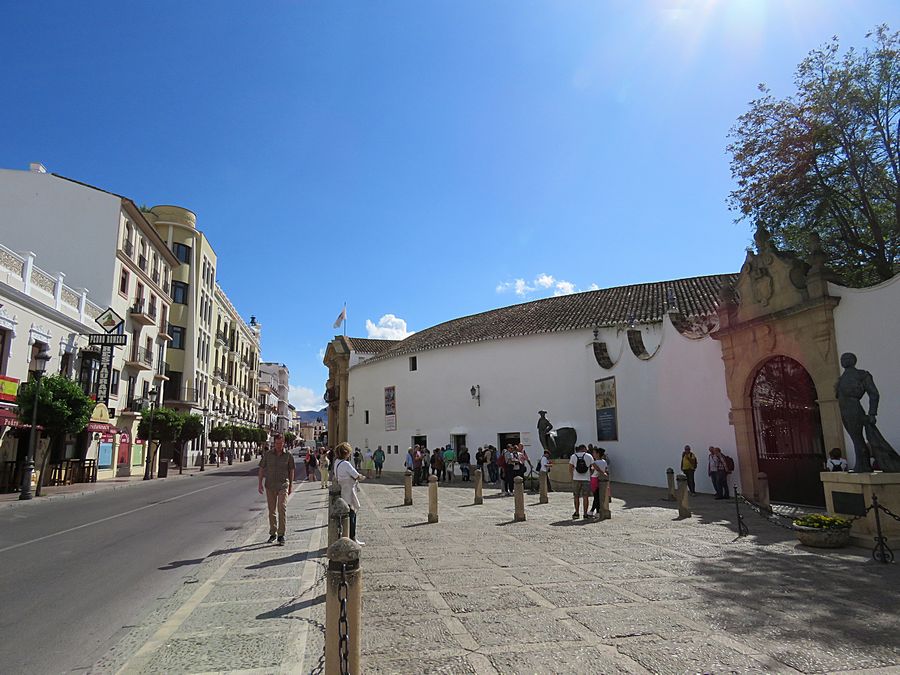
A main street in Ronda with the bullring on the right
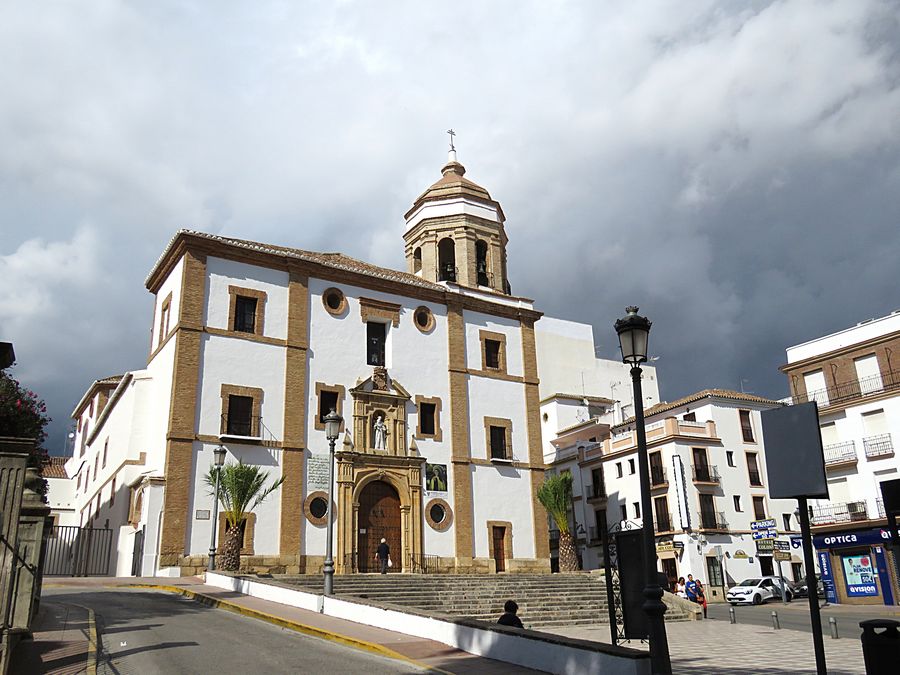
Convent de la Merced in Ronda
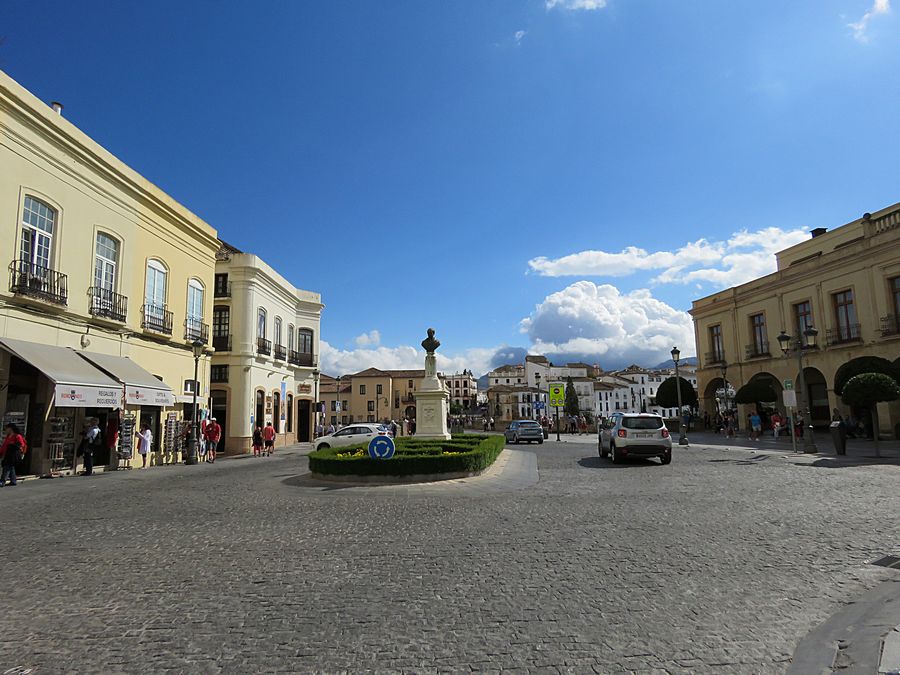
Parador de Ronda, where we stayed, on the right.
The Moorish old town in the background.
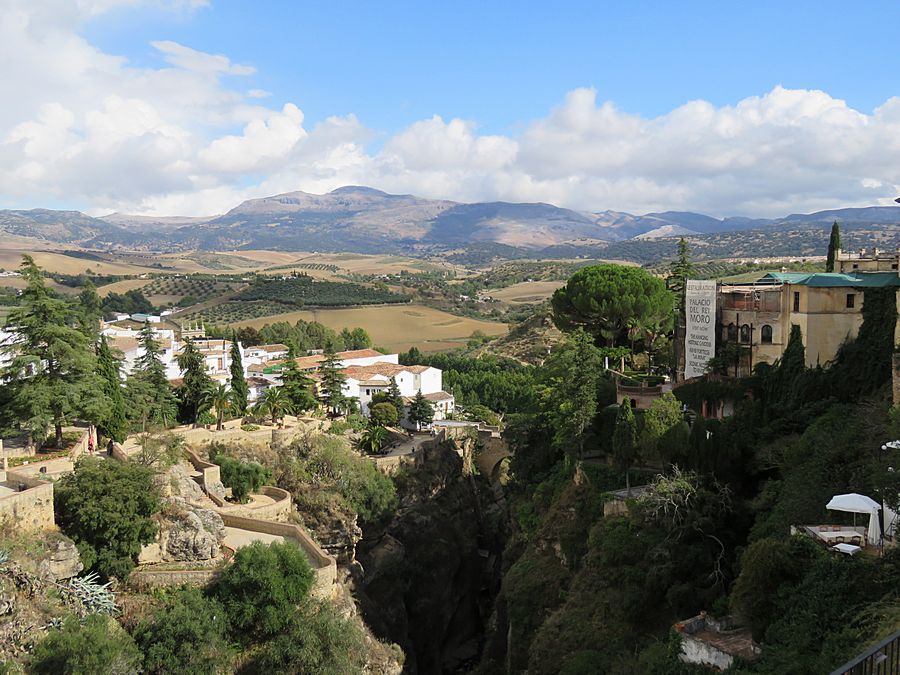
A view from the "New Bridge," Puento Nuevo.

Puento Nuevo Bridge in Ronda
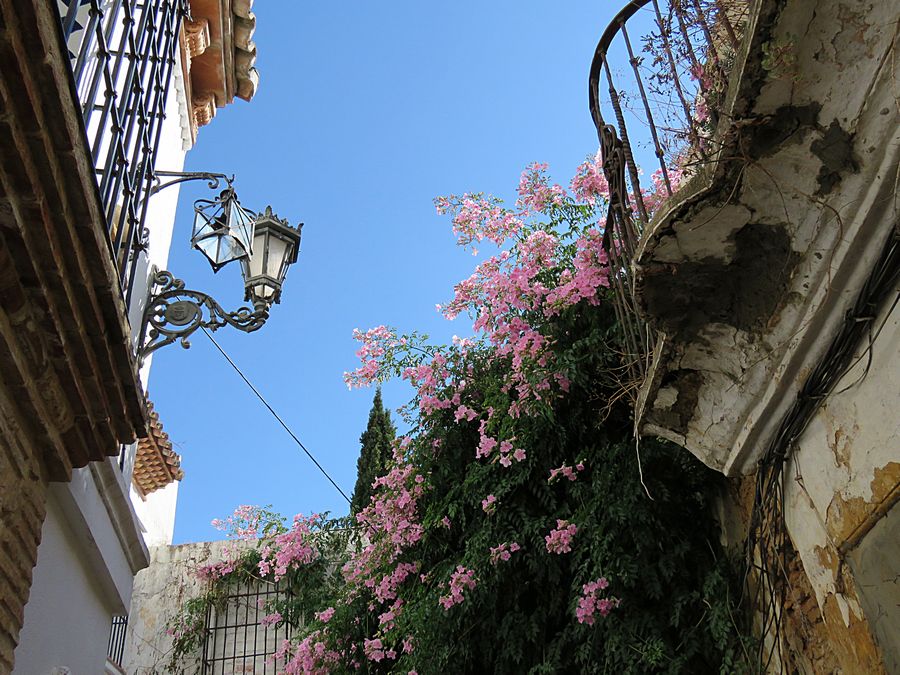
Flowers on a building in the old Moorish section of town.
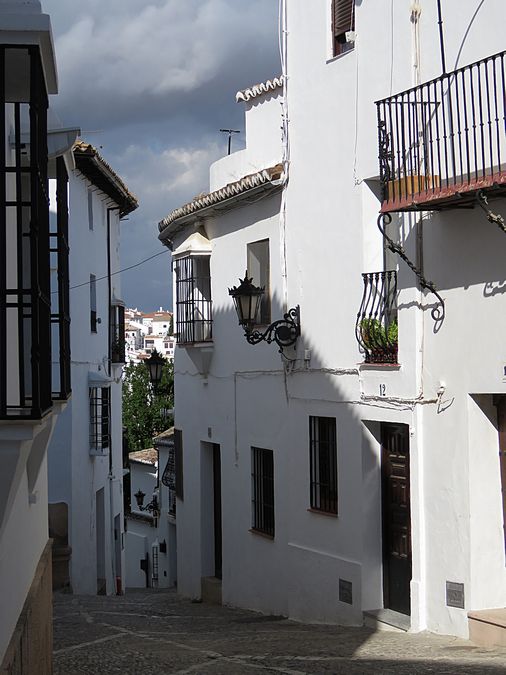
A street in the old section
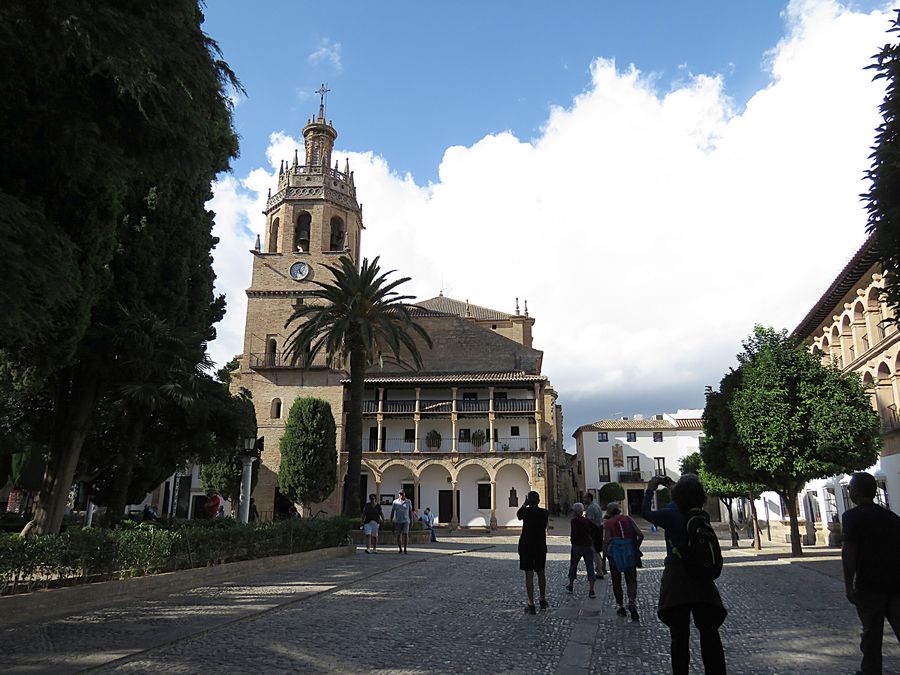
Iglesia de Santa Maria la Mayor - Santa Maria Church
During the Islamic occupation, the high mosque of La Medina
was built on this same site. Only the Mirhab arch now remains
of this building, along with a section of wall. Following the
conquest of the town, the Catholic Monarchs ordered a church
to be built in place of the mosque.
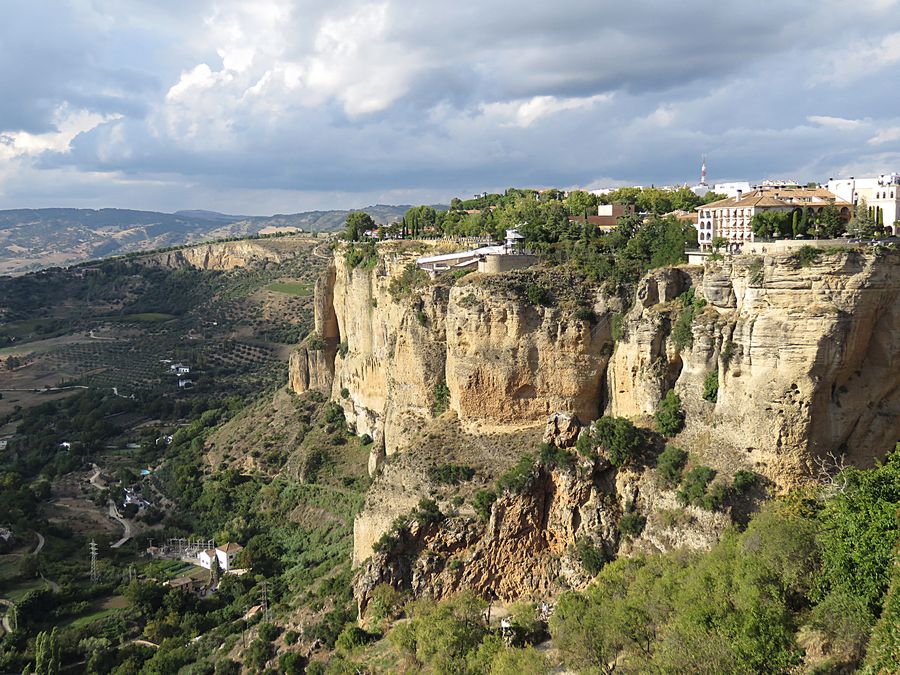
Looking toward the old Moorish section
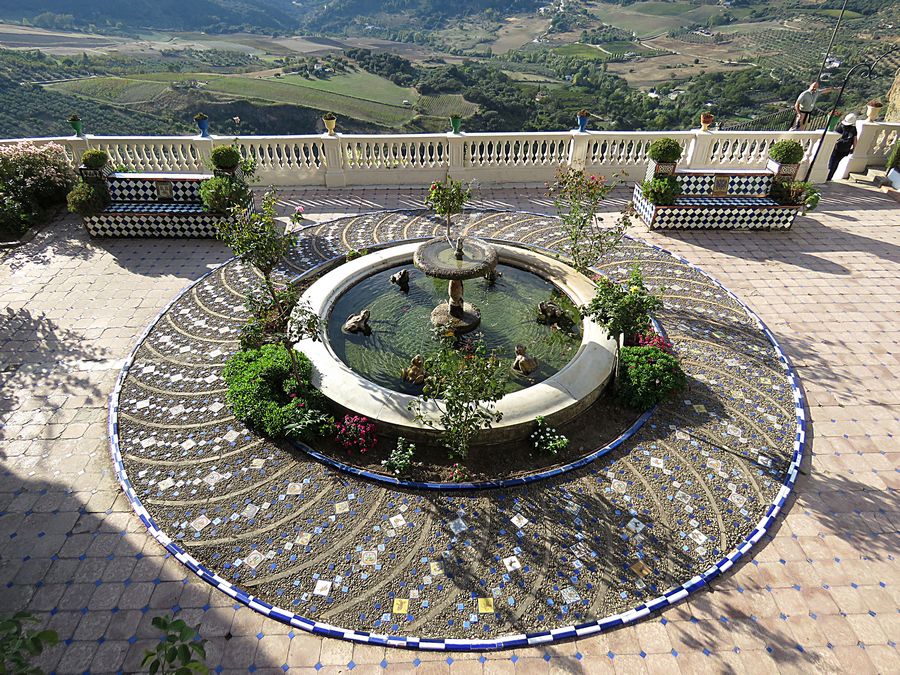
Beautiful patio in Ronda high above the plains
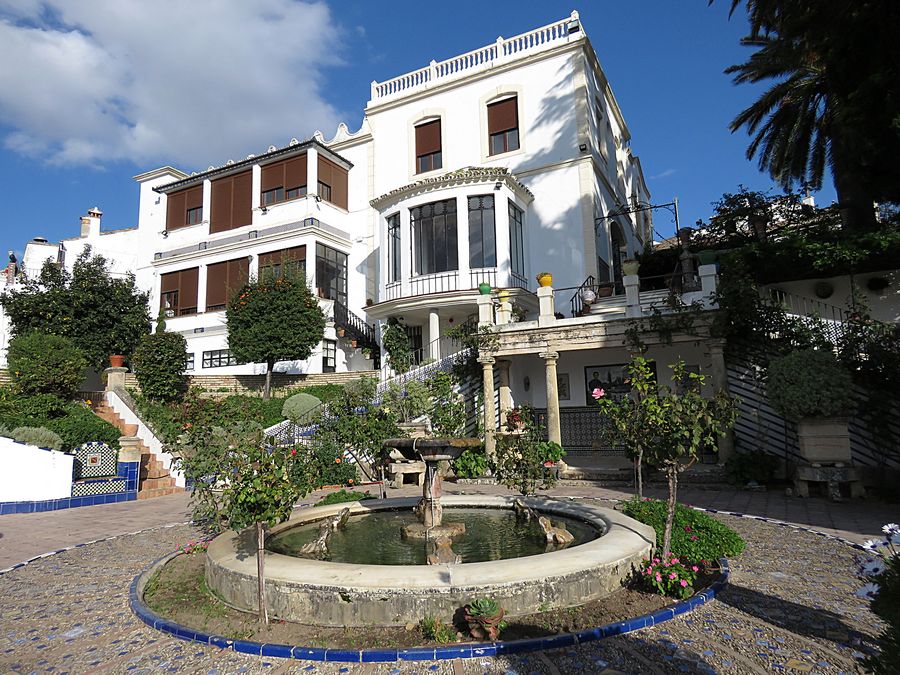
A palatial home in Ronda from the patio
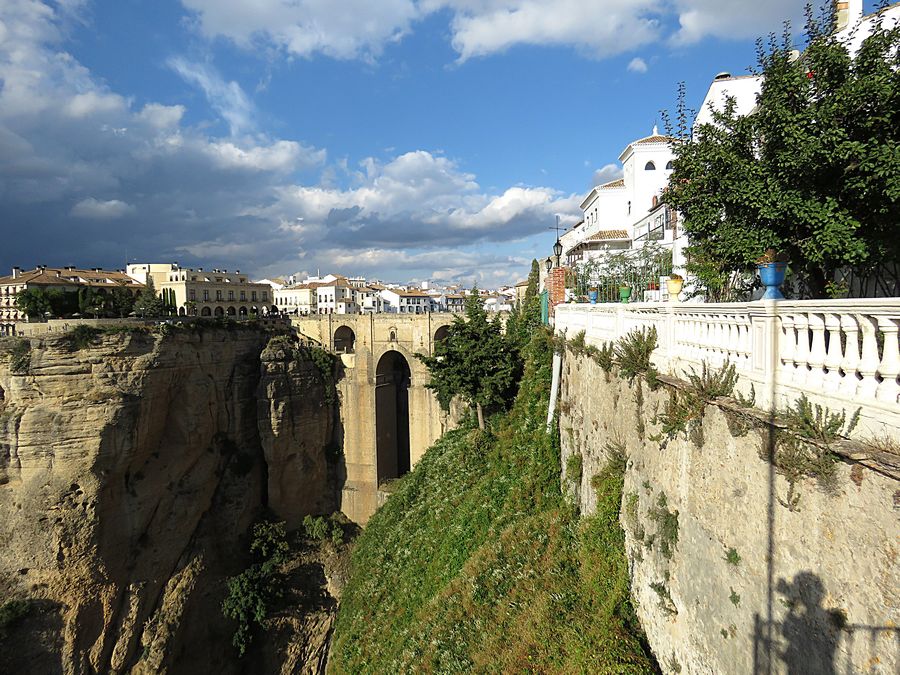
View of the other side of Puento Nuevo Bridge
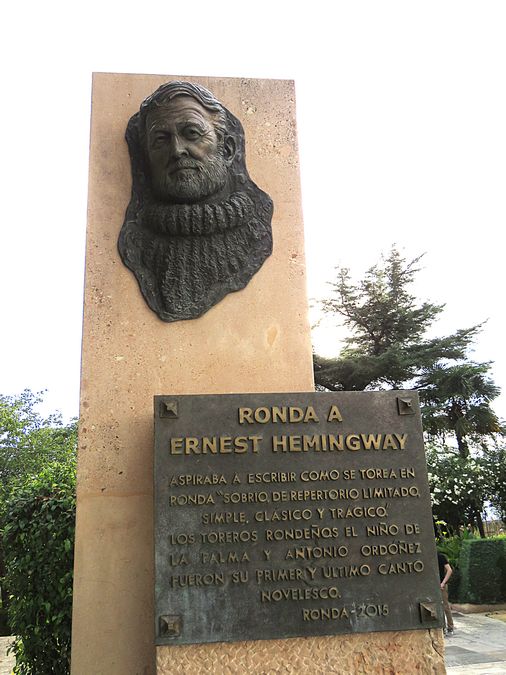
Monument to Hemingway in Ronda.
Hemingway's novel "For Whom the Bell Tolls" describes the
execution of Nationalist sympathizers early in the Spanish Civil
War. The Republicans murder the Nationalists by throwing them
from cliffs in an Andalusian village, and Hemingway allegedly
based the account on killings that took place in Ronda at
the cliffs of El Tajo. There is also a monument nearby
to Orson Welles
who lived for a time in Ronda.

View of Ronda from a restaurant patio
and bar, across the street
from the bullring.
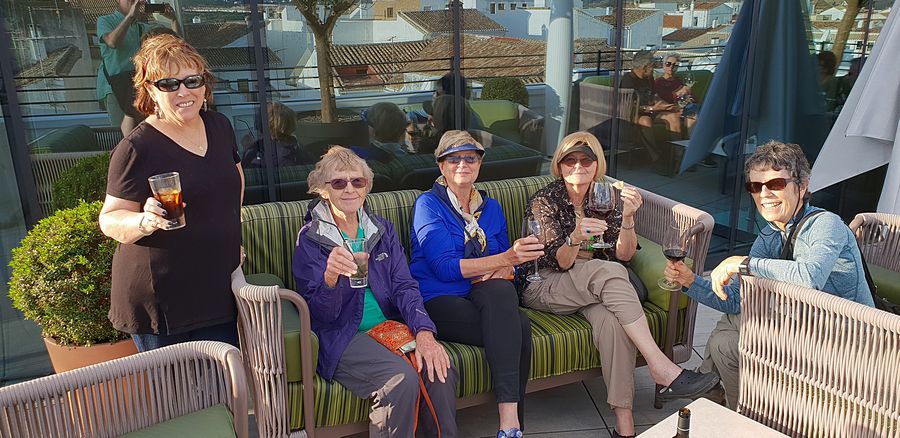
Some of the group enjoying a drink and
the view from the patio. From left,
Linda from Georgia, Geneva from Arizona, Mona
(originally from Sweden) from
California,
Sallie from California, and Pat (Colorado).
You can figure out who the wine
drinkers are.
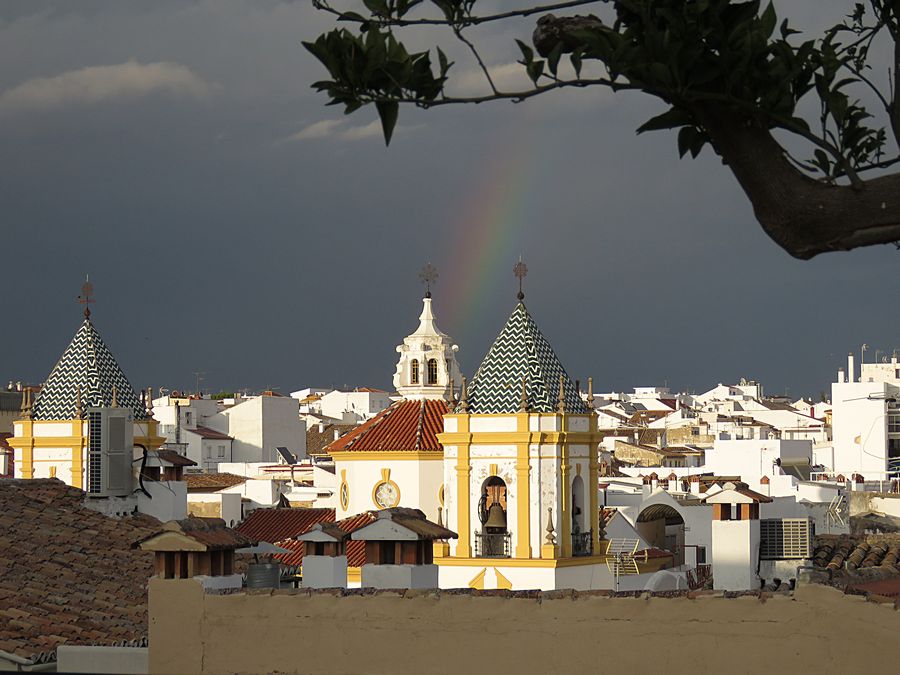
A rainbow over Ronda, as seen from the patio
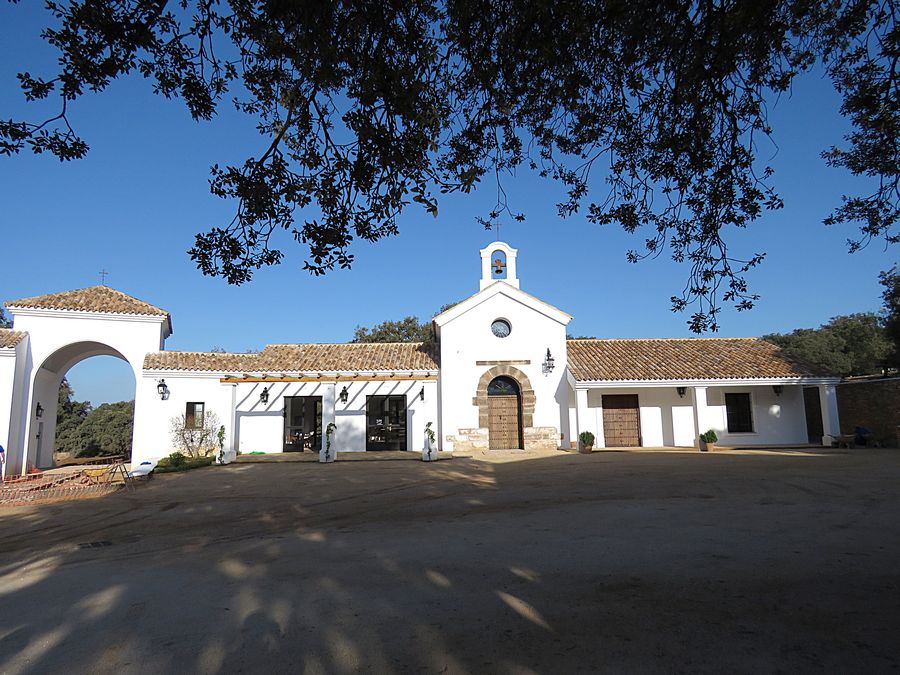
We went to a bull ranch near Ronda owned by a retired
famous bullfighter, whom we met. This is part of the ranch.
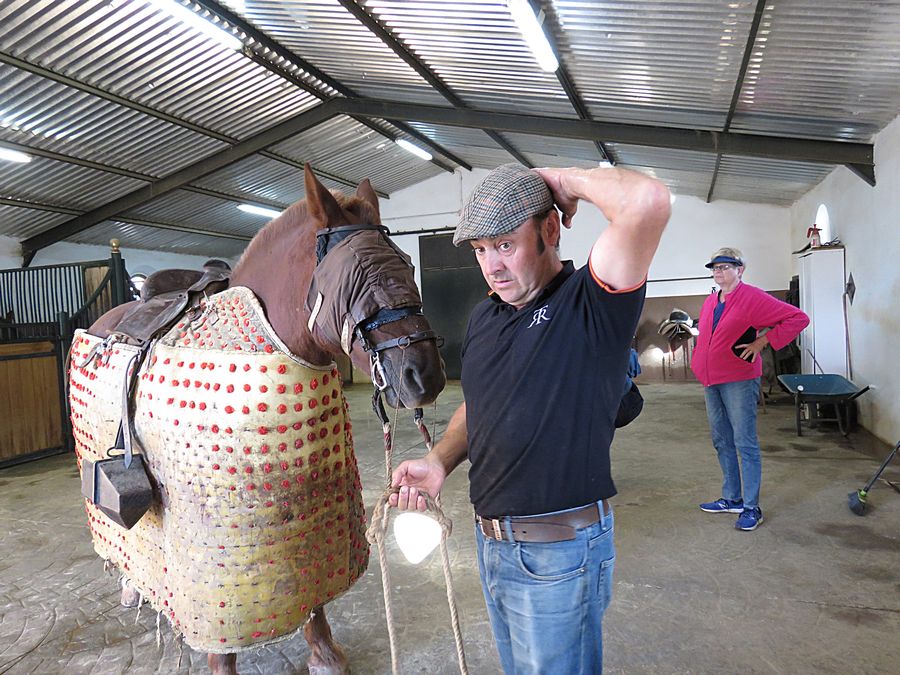
We were shown the protective covering put on horses to
protect them from the bull when horses are used.
They blindfold
the horse to keep it from being distracted.
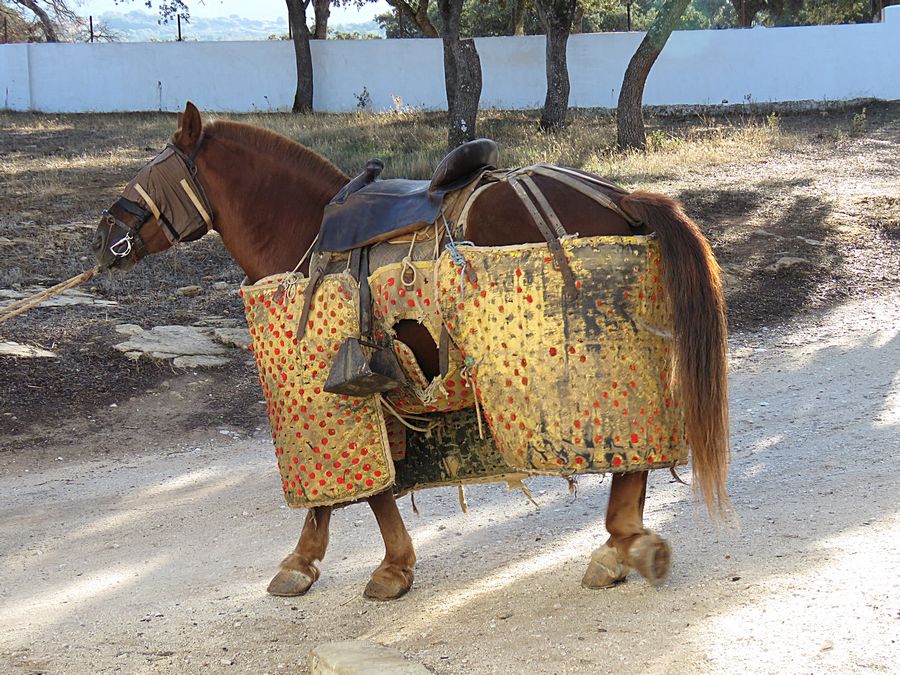
The horse fully covered
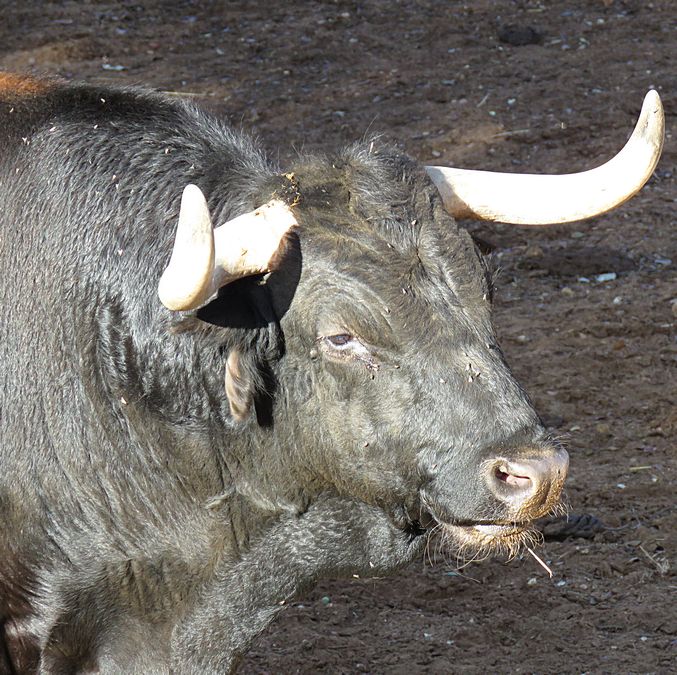
One of the bulls at the ranch. A particular breed of cattle, the Spanish Fighting
Bull, is used for bullfighting. These bulls must be bred in large ranches, and in
conditions as similar as possible to the way they would live in the wild.
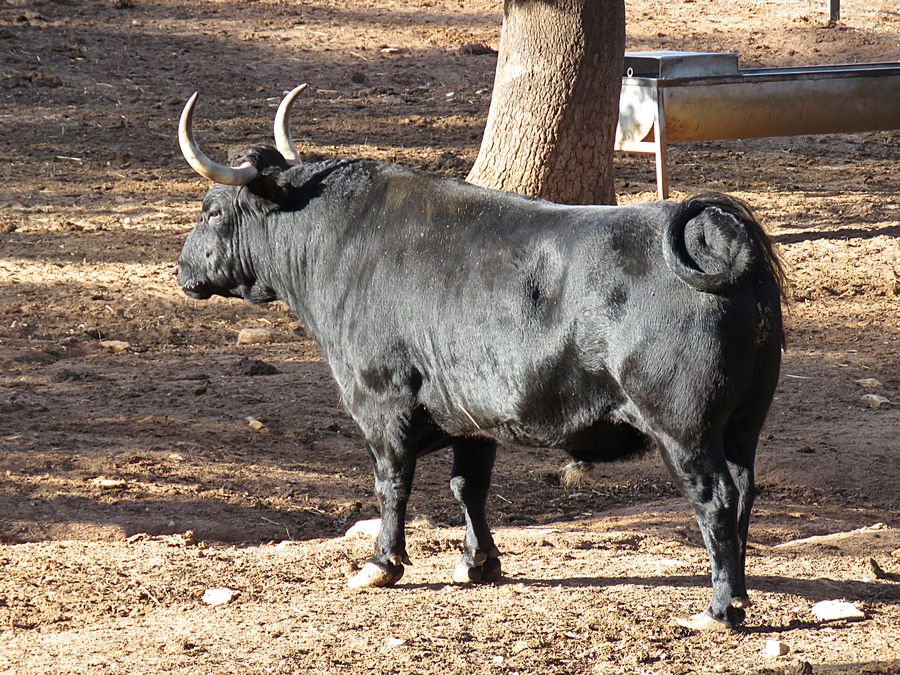
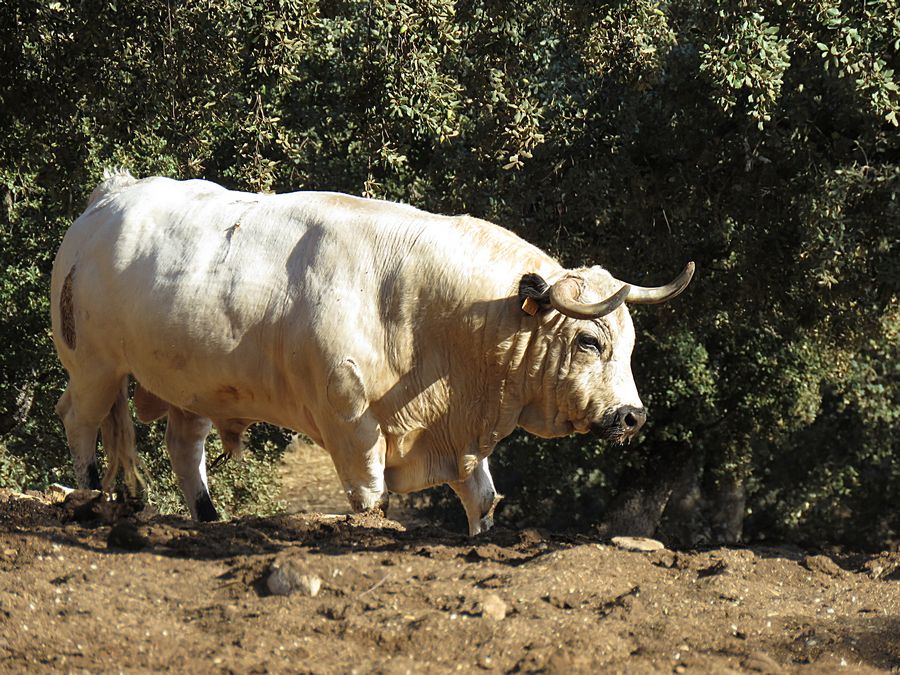
A bull that had been selected for breeding.
They select bulls for bullfighting
that have the best aggressive spirit. Fighting bulls
are selected primarily for
a certain combination of
aggression, energy, strength, and stamina.
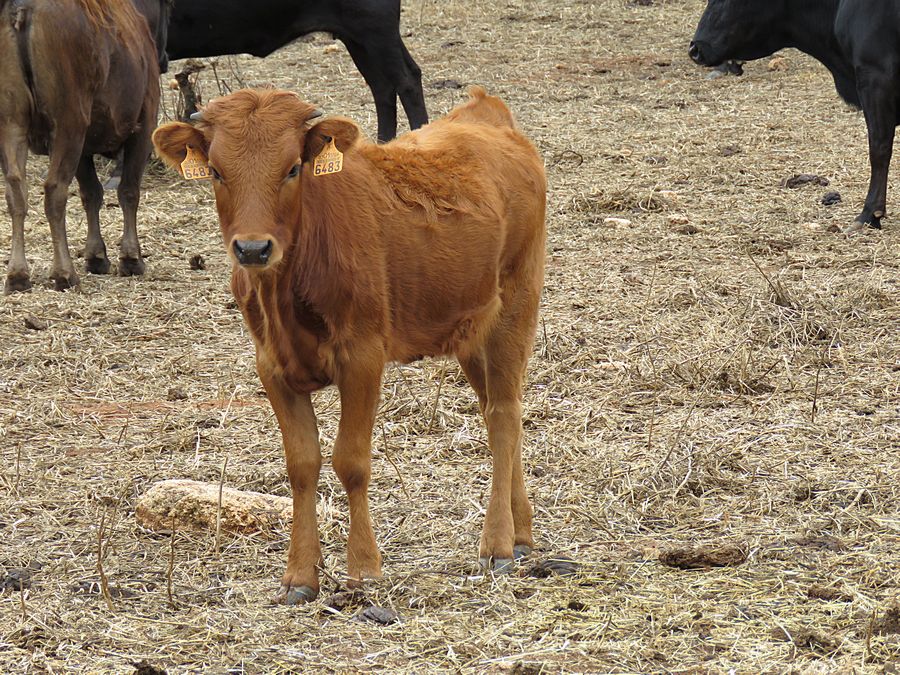
A calf on the bull ranch.
Bullfighting is controversial
in Spain.
Our tour guide felt the tradition
will not last.
I hope he's right.
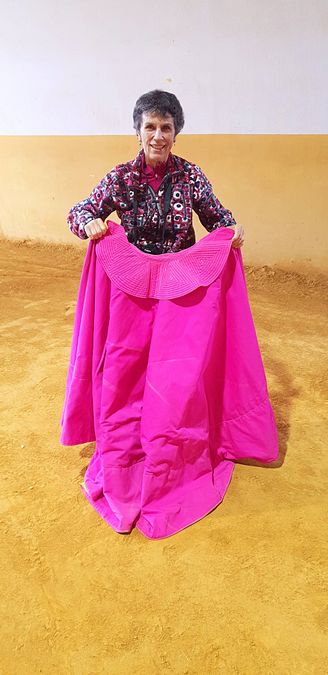
Pat contemplating a new hobby?
No way!
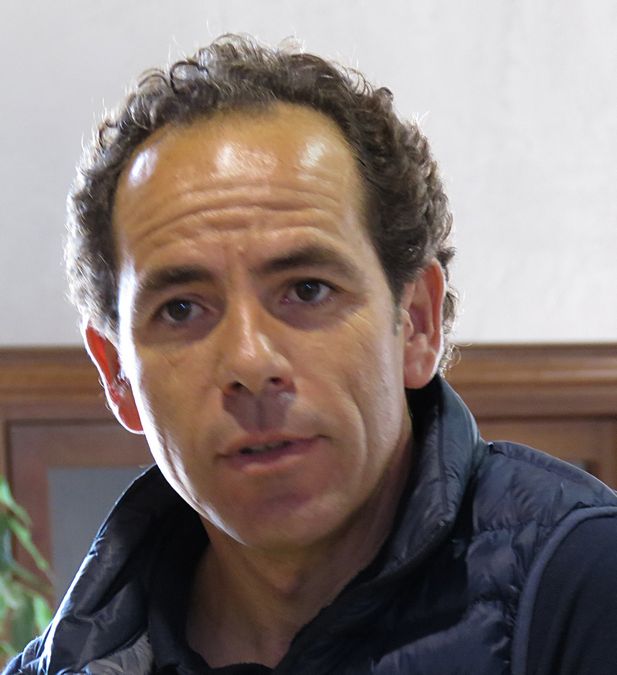
The owner of the bull ranch and retired bullfighter.
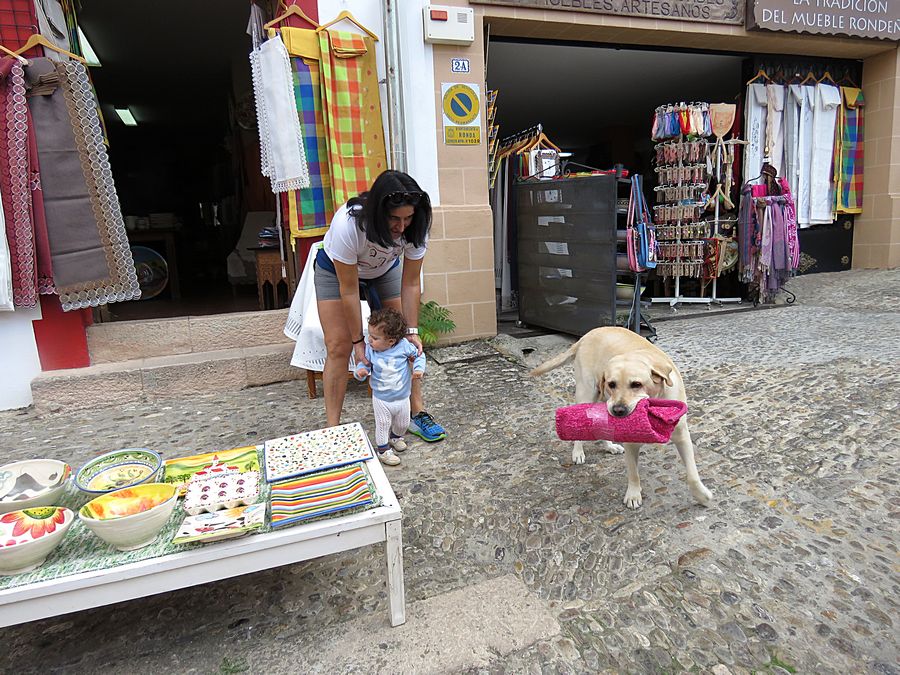
Back in Ronda and walking around the Moorish section.
This dog, owned by the shopkeeper, would not give up his
precious towel under any circumstances.
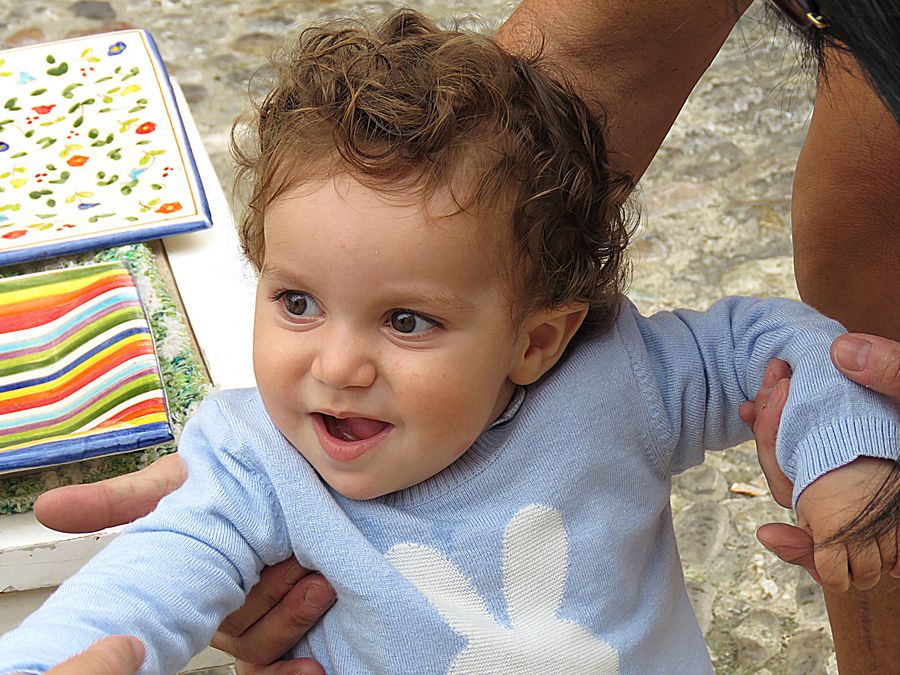
Child of the shopkeeper
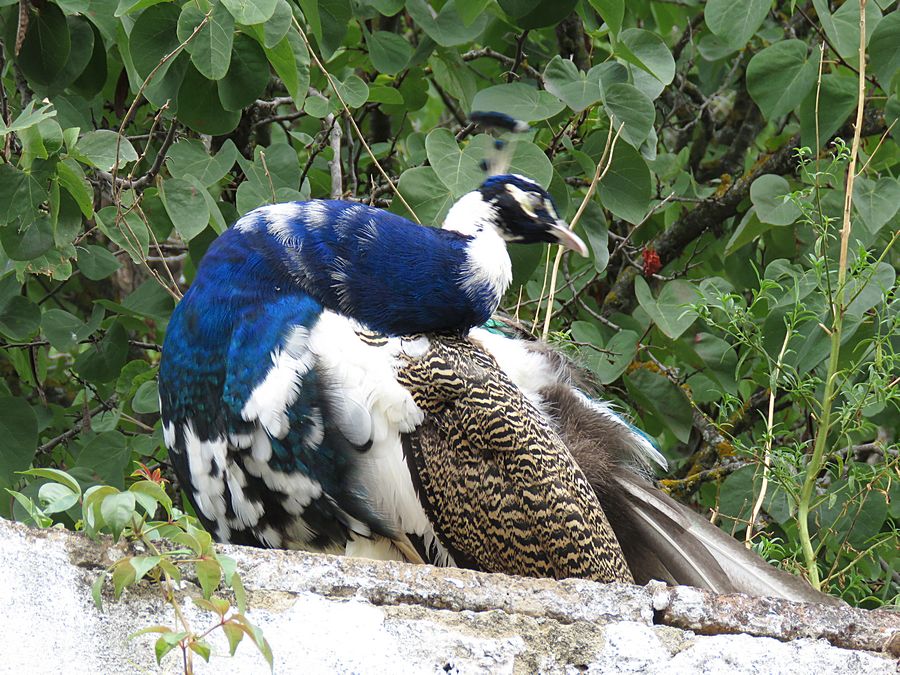
A peacock seen while walking around Ronda
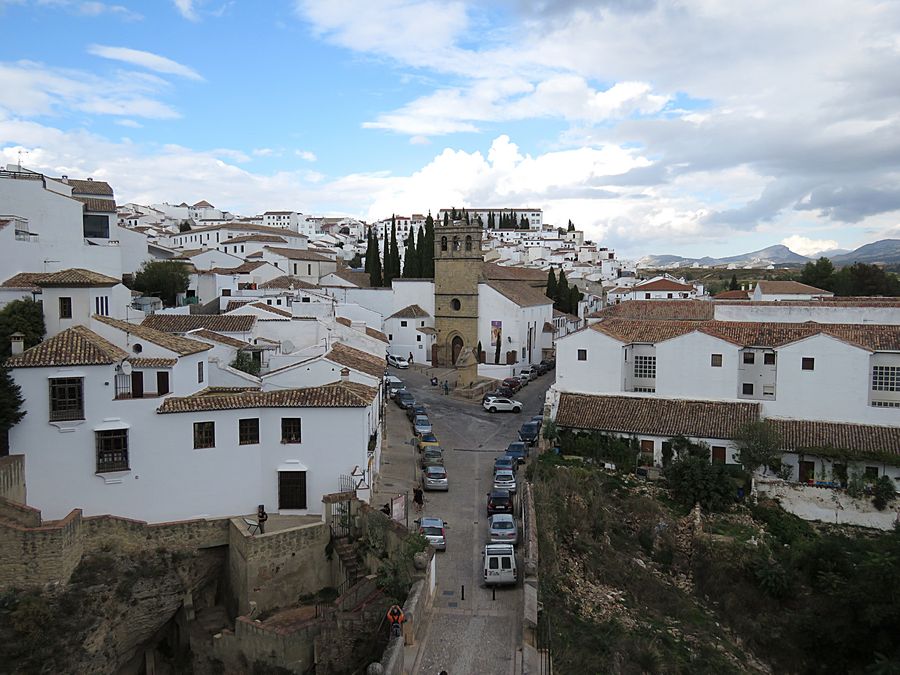
Late afternoon view of the Moorish section.
This was near the ancient Arab baths,
which we saw from a distance.
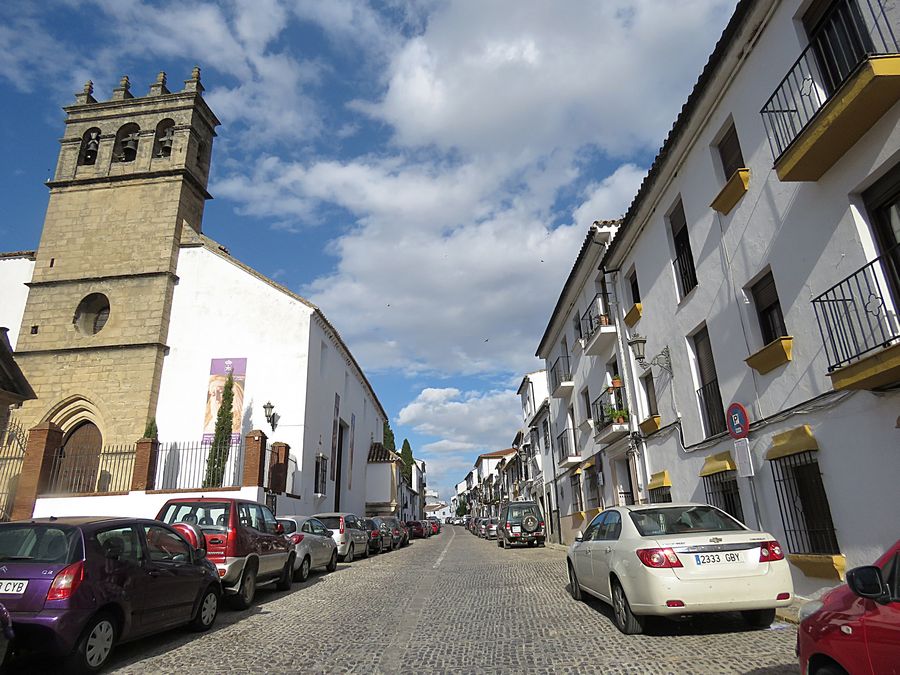
A street in the old Moorish section

Another street with the mountains in the background
Link to Part Two, Page Three - Cordoba, Ubeda, and Baeza
Pat's Home Page